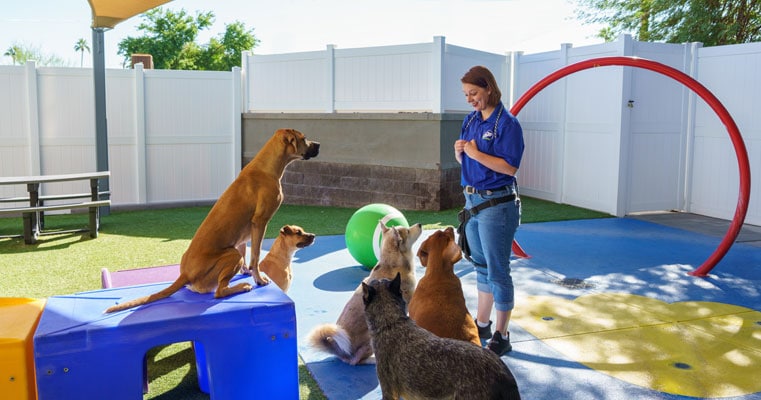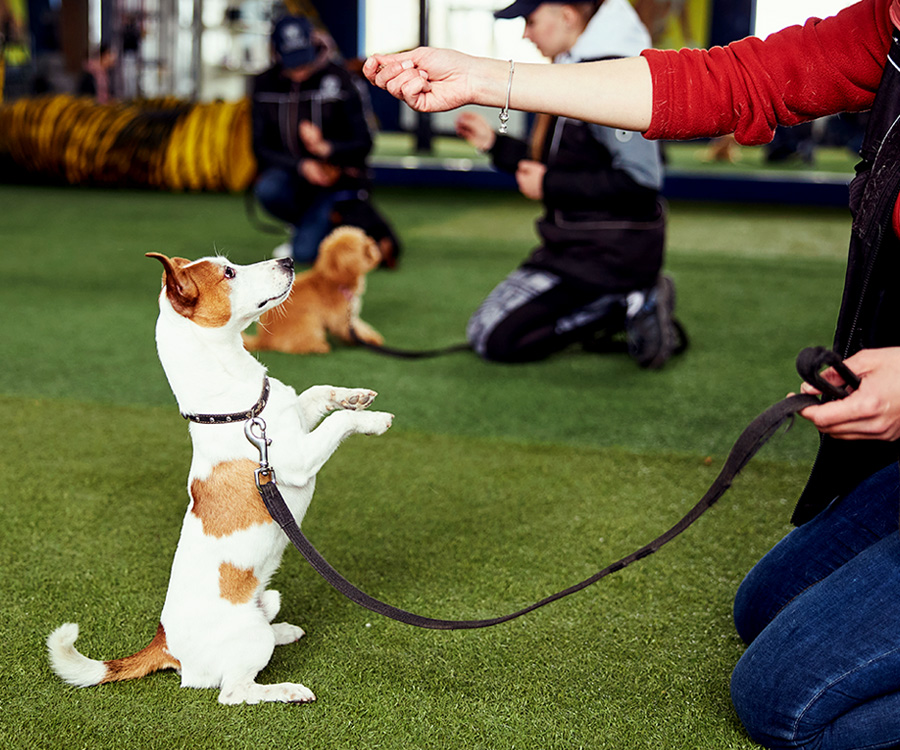Dog Training Techniques to Help Manage Aggressive Behavior in Dogs
Dog Training Techniques to Help Manage Aggressive Behavior in Dogs
Blog Article
Top Pet Dog Educating Methods Every Owner Should Know

Favorable Support Techniques
Using positive support techniques is necessary for efficient pet dog training, as it cultivates a relying on bond between the trainer and the pet. This approach concentrates on rewarding desirable actions as opposed to penalizing undesirable ones, developing an atmosphere helpful to finding out. Incentives can consist of deals with, appreciation, or playtime, which motivate dogs to repeat the behaviors that make them these rewards.

Furthermore, this method boosts the canine's excitement for training sessions. They are more engaged and receptive when dogs associate training with favorable experiences. Dog training. Beyond instant actions adjustment, favorable support encourages a collaborative partnership between the pet and fitness instructor, minimizing anxiety and worry
To make best use of performance, it is crucial to deliver incentives promptly, making sure the canine connects the actions with the reinforcement. Essentially, positive reinforcement strategies not only yield better-trained pets yet also advertise an unified collaboration in between dog and proprietor.
Clicker Training Technique
The remote control training approach is an extremely effective technique that builds on the principles of favorable support by including a distinct sound to mark desired behaviors. This method utilizes a tiny handheld tool that creates a clicking audio, allowing trainers to communicate with their pets in a clear and prompt fashion. When a pet dog performs a habits that the proprietor desires to motivate, the remote control is triggered, followed by a reward, generally in the kind of treats or appreciation.
The trick to effective remote control training lies in uniformity and timing. It is critical to click at the exact moment the preferred habits happens, making certain that the pet links the sound with the activity and the subsequent incentive. This technique not only improves communication yet also cultivates a more powerful bond between the pet and the proprietor, as it encourages involvement and interaction during training sessions.
Clicker training can be used to a range of actions and commands, from basic obedience to a lot more complicated methods. Its convenience and performance make it a preferred method amongst professional instructors and family pet owners alike, leading the way for a responsive and trained canine companion.
Chain Training Fundamentals
Effective chain training is important for making sure a risk-free and enjoyable strolling experience for both canines and their owners. A level collar might work for some canines, while others may profit from a harness that lowers pulling.
Introduce your dog to the Get More Info chain gradually, allowing them to explore it in a comfortable atmosphere. Technique loose-leash walking once they are accustomed. This entails gratifying your dog for walking close to you as opposed to drawing in advance. Usage treats and appreciation to reinforce desired behavior, and be sure to stay calm and assertive.
If your canine begins to draw, quit walking immediately. Additionally, technique different walking environments to help your dog adjust to disturbances.
Normal practice will solidify your dog's understanding of chain rules. Bear in mind that chain training is an ongoing process; patience and uniformity will yield the very best results, cultivating a positive experience for both you and your canine friend.
Socializing Techniques
Socialization is an important element of dog training that must ideally start throughout puppyhood however can be useful at any age. Efficient socialization aids pets create self-confidence and reduces the probability of behavioral issues. To apply successful socialization techniques, expose your pet dog to a range of atmospheres, individuals, and other pets.
Start with regulated setups, such as pup courses or organized playgroups, where young pet dogs can interact safely. Progressively introduce your canine to new experiences, consisting of different noises, surface areas, and activities. Make sure these encounters are favorable and rewarding to develop a sense of security.
For adult dogs or those lacking exposure, start with low-stress scenarios. Short, positive interactions with pleasant humans and calm pet dogs can create favorable organizations. Use deals with and praise to reinforce desirable actions during these experiences.

Consistency and Persistence
Recognizing the relevance of consistency and patience in canine training is vital for attaining enduring results. Irregular training can lead to complication, making it hard for the canine to realize commands or behaviors, inevitably preventing development.
Pet dogs, like people, find out at their own rate. This promotes a trusting partnership in between the pet dog and proprietor, urging a much more enthusiastic and eager learner.
To grow uniformity and perseverance, establish a routine training regular, make use of the exact same commands, and make sure that all family participants apply the same training concepts you could check here - Dog training. By doing so, you develop a secure setting for discovering, permitting your pet to create and prosper into a mannerly companion
Verdict
Finally, effective dog training methods, such as favorable support, remote control training, and appropriate leash training, are crucial Check This Out for cultivating a healthy owner-dog partnership. In addition, carrying out socialization approaches and maintaining consistency and persistence throughout the training process contributes substantially to a pet's total health. By integrating these approaches, canine proprietors can facilitate the development of well-adjusted, loyal family pets, inevitably boosting the lifestyle for both the owner and the dog.
Among the most popular approaches are favorable support, clicker training, and leash training, each offering distinct benefits that contribute to a well-behaved dog. As we explore these fundamental techniques, it ends up being noticeable that grasping their subtleties can considerably impact the training experience and the dog's total actions.Making use of positive reinforcement strategies is necessary for effective dog training, as it cultivates a trusting bond between the trainer and the canine.In verdict, efficient canine training strategies, such as positive support, clicker training, and correct chain training, are crucial for fostering a healthy and balanced owner-dog connection. By integrating these techniques, pet proprietors can facilitate the development of well-adjusted, obedient family pets, ultimately enhancing the high quality of life for both the owner and the canine.
Report this page